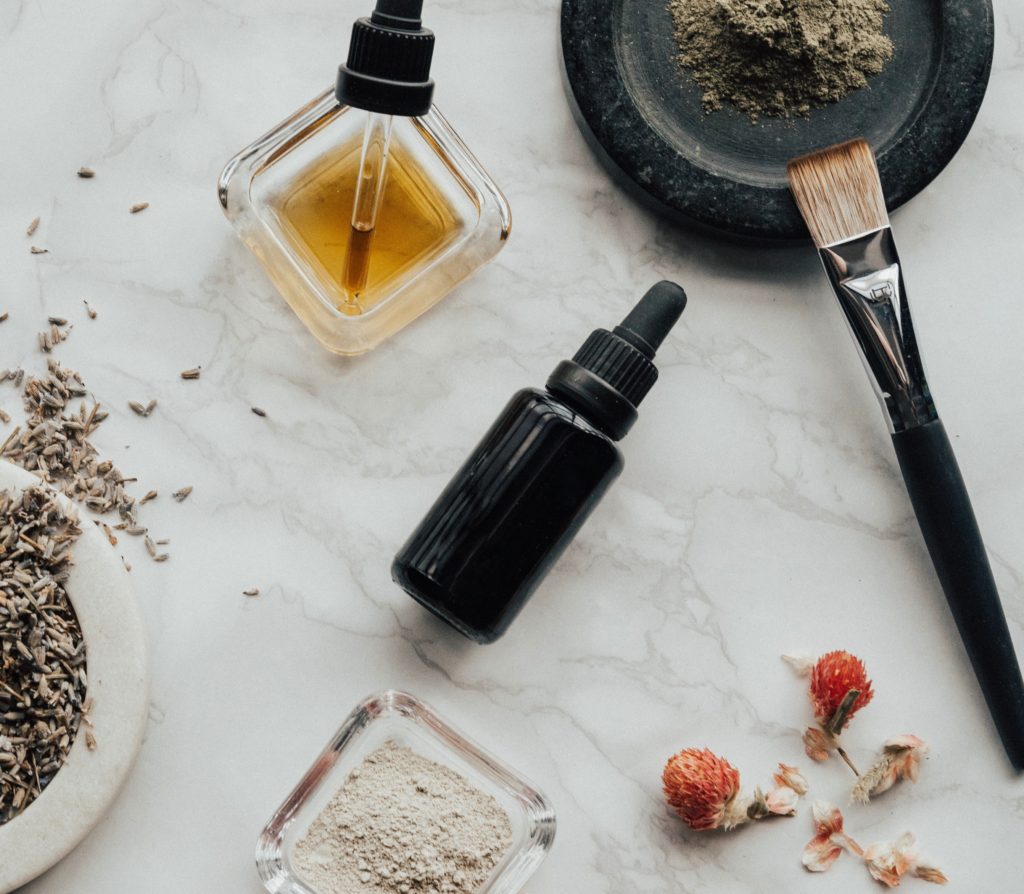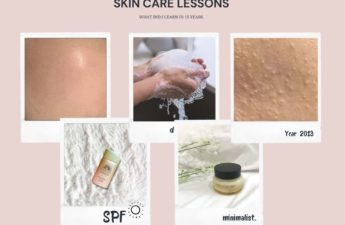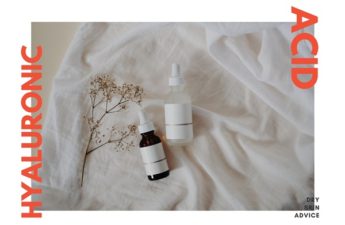The skin is the largest and one of the most important organs of the body and it has three layers. The epidermis is the outermost layer of skin and it’s a crucial layer as it’s the body’s first line of defense against bacteria, viruses, and everything mother nature can throw at you. It protects your skin from elements that will damage your skin and it also holds in moisture so that your skin does not get dried out. However, this skin barrier can get damaged due to reasons such as aging, UV rays, and even your skincare routines. So how would you know if you have a damaged skin barrier?
Dryness, dehydration, skin sensitivity, and easily irritated skin are some of the common signs that your barrier is damaged. The key to successfully heal your skin barrier is through hydration and moisture. Always remember this when you are trying to heal your skin barrier, hydration will not work on its own. Sometimes, a damaged skin barrier will cause dryness on skin. Thus, your immediate thought would be to hydrate your skin. However, you will also be needing to moisturize it as it helps seal the hydration. Hydration and moisture are both crucial when it comes to healing your damaged barrier.
As mentioned previously, your skincare routine may be a reason that your barrier is damaged. Ways to avoid this is by selecting skincare products that do not contain fragrance, essential oils and drying alcohols. Below we will be looking at seven ingredients that would actually help you to repair skin damage, keep in mind that you will need to create a well-rounded routine in order to restore your skin barrier. This means that you should be relying on just one ingredient to help you.
Does Niacinamide Help to Repair Skin Barrier?
Niacinamide does help to repair the damaged skin barrier and brighten your skin. Niacinamide can stimulate the body’s production of its own ceramide, cholesterol, and fatty acids. These three components are important for strong and healthy skin. In fact, they make up the moisture barrier. Niacinamide also strengthens your skin barrier.
In addition, this ingredient also signals your skin to start producing more of repairing agents in your skin. That being said, your skin will heal faster.
You will need to use a skincare product with 2% or a higher percentage to obtain this effect. However, it does not mean that a higher percentage of niacinamide in skincare products is better. So, be careful when you choose your skincare product. We recommend 2% – 5% of niacinamide for first-time users. Even though niacinamide is generally safe to use on most skin types, some of us may experience a certain discomfort when niacinamide is applied. From my personal experience, niacinamide works better after you stabilize your skin barrier. Try avoiding using niacinamide while you are still experiencing symptoms like dryness, itchiness, sensitivity, and redness on your skin.
Niacinamide on its own is not a cure-all as there are many causes behind skin damage, and not everyone will have the same reaction to certain products or ingredients.
Below I have included six other ingredients that have shown to help repair damaged skin.
When trying to find which ingredient works best for you, it is advisable to try only one at a time. Keeping it simple will help you to determine how your skin responds to each ingredient, because when mixing ingredients it can be either more beneficial than either ingredient by itself, or they could cancel each other’s effect out. So in another article, I will write about which ingredient combinations work best and how to properly combine them in your skincare routine.

Panthenol
The first ingredient on our list is Panthenol, a provitamin of B5 that is soothing and is an anti-irritating component. Panthenol has the power to bind hydration to the skin. This means it aids in sealing hydration and prevents it from leaving your skin. Moreover, it also helps stimulate lipid production. How does this actually help your skin?
Well, the lipid is vital as it aids in holding the moisture in its place. Panthenol is really helpful if you are suffering from transdermal dermal water loss and dehydration. This is due to the fact that this ingredient not only hydrates your skin but it also holds the hydration in. With panthenol, your skin is able to keep its softness and elasticity. Panthenol has the ability to diffuse water into the skin by penetrating deep into its layers and this will ensure that moisture is kept deep within the skin’s tissues. Along with the benefits mentioned earlier, panthenol repairs skin damage through its ability of healing wounds and even has added anti-inflammatory benefits.
Cica
Cica stands for Centella Asiatica and it is famously known as the plant that tigers roll around in and rub their skin when they are injured, cica aids the tiger’s skin to regenerate itself. It is a leafy green herb that has healing properties to treat wounds and burns and it has been used for many centuries. Now in the present, this herb can be found in skincare products as well and has the ability to treat the damage that has fallen upon your skin barrier.
Cica helps to soothe and fix damaged skin while restoring and strengthening the skin barrier. This means cica can also aid in treating acne-prone skin and it would also calm down skins that are sensitive. Moreover, Cica is loaded with amino acids, beta-carotene, fatty acids, and phytochemicals which includes vitamin C, A, B1, and B2. These ingredients help the skin by producing collagen and they are loaded with antioxidants.
Antioxidants are known to repair and protect the skin. Antioxidants are excellent in repairing damage caused by oxidant stress which could occur for a lot of reasons and could even be linked to stress levels. Your skin could end up being damaged due to the levels of your stress. Oxidant stress can also happen because of pollution from the environment, bad air quality, and lifestyle factors such as diet and exercise. Vitamin E is an antioxidant with additional benefits, it boosts sunscreen protection as it has UV protection. Please keep in mind that using vitamin E does not mean you have to stop using sunscreen as it only enhances the benefits of the sunscreen hence it is not a replacement for it.
Ceramides
Moving on, the next ingredient that is essential to repair skin damage is Ceramides. This ingredient makes up 50% of the skin and plays a crucial role in the skin barrier. Our skin has the ability to naturally make them but as we get older it decreases or even stops producing ceramides. By your 30s about 40% of ceramides in your skin would be lost. So what do ceramides do? How can it actually help your skin?
Ceramides are what holds your skin cells together and without it, your skin falls apart. To explain in detail, it seals the crack between skin cell tiles thus keeping the hydration from leaking out. It creates a protective layer that plumps the skin and locks in moisture. This means Ceramides keep your skin plump and without its fatty defenses, your skin will easily be damaged due to environmental reasons. Products that contain ceramide has proven to be just as good as the ones your skin produces, so look at the skincare products you are stocking up on and check if ceramide is listed as one of the ingredients in it.
Just like antioxidants, ceramides can also be found in the things we eat. We can incorporate it in our diet through soybeans, eggs, dairy, wheat germ, and brown rice. An interesting fact is that ceramides cannot actually work on its own and it needs the help of cholesterol and fatty acids. These three work together to help restore the damage done to your skin.

Fatty acid
Speaking of ingredients that work well with ceramides, the next on the list is fatty acid. There are two different types of fatty acids such as natural fatty acids and essential fatty acids. Typical examples of natural fatty acids for skin include glycerides, sterols, and phospholipids. While, essential fatty acids for skin include omega-3 and omega-6, and cannot be produced by the human body. For this reason, both omega-3 and omega-6 must be consumed through the diet. Fatty acids are commonly found in skincare products and it acts as an emulsifier.
With fatty acid, you will be able to increase skin-hydration by retaining the skin’s moisture and reducing evaporation caused by the surrounding atmosphere. Moreover, fatty acids help thicken skincare products, making it easier to spread on the skin. An example of fatty acids includes argan oil which is rich in texture and helps protect the lipid barrier and prevent moisture loss.
Natural Moisturizing Factors
The epidermis has the ability to produce a chemical protective coat called Natural Moisturizing Factor (NMF). It is not just one substance but is a mixture of water-soluble, powerful humectants, these are substances that draw atmospheric water like a magnet. So because of this, the skin would dry out when there is not enough humidity in the air. Hydrated NMF (particularly the neutral and basic amino acids) interacts with keratin fibers, reducing the stickiness between the fibers and thus increasing the elasticity of the stratum corneum (the outermost layer of the skin). As a result of the elasticity of the skin, it prevents dryness and flaking of the skin.
NMF also allows the corneocyte cells to balance the osmotic pressure applied by the intracellular “cement” surrounding them and hence keeping the solute concentrations balanced is important for preventing excessive water influx. An example of this can be seen in the wrinkled skin of someone who has been in the bath too long.
Natural Moisturising Factor also plays a role in sustaining the skin’s acid mantle which actually keeps harmful microorganisms from entering and penetrating through the skin while also aiding in the production of sebum. Sebum is a vital waxy/oily substance that creates an occlusive film on the skin’s top which eventually limits water evaporation.
Sadly just like ceramides the level of Natural Moisturizing Factor in epidermis decreases as the human body ages along with the production of sebum. This is why we often notice skins becoming dry and dehydrated as we get older. Luckily, the ingredients of NMF could be found in skincare products that are available. The most popular ones include urea, lactate, and hyaluronic acid. By looking for products that contain a blend of NMF ingredients you would be giving your skin the benefit of balancing natural skin as well as rebuilding the moisture level in the skin. Not having enough NMF has been related with various stratum corneum abnormalities that appear evidently at areas of dry skin along with scaling, flaking, or even fissuring and cracking.

Hyaluronic Acid
The last ingredient on the list is hyaluronic acid. Previously you would have read above that hyaluronic acid is one of the components included in NMF. However, you should also know that hyaluronic acid is an excellent ingredient to repair skin damage and it has its own benefits as well. Our body has the ability to produce it on its own. It functions to retain moisture in your skin and also keeps your tissues lubricated and moist. As you have read above, there are several factors that stop our body from producing this reparative ingredient naturally, which is why we go searching for it in skincare products.
A great factor about Hyaluronic acid is it is suitable for most skin types as it is a gentle ingredient that aids in repairing the skin. It has the ability to hydrates the skin and it also reduces signs of aging such as fine lines and wrinkles. Moreover, this ingredient can also increase the speed of wound healing.


